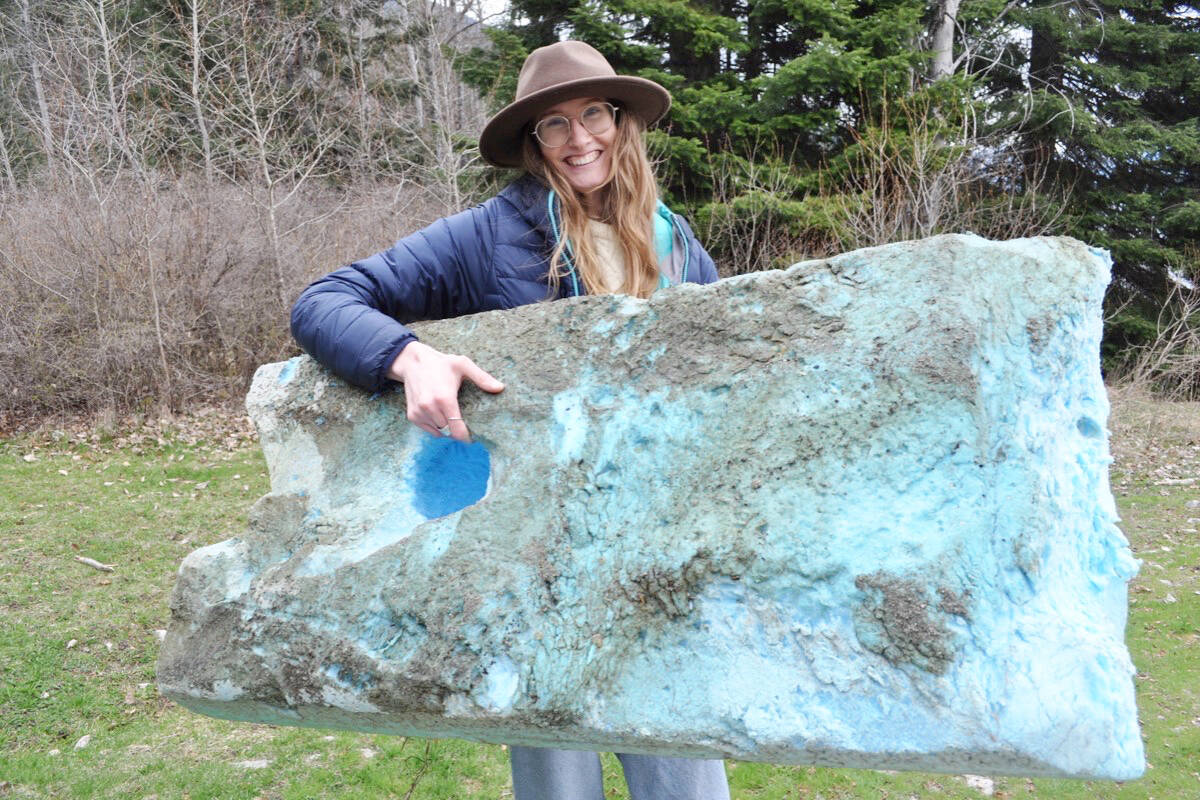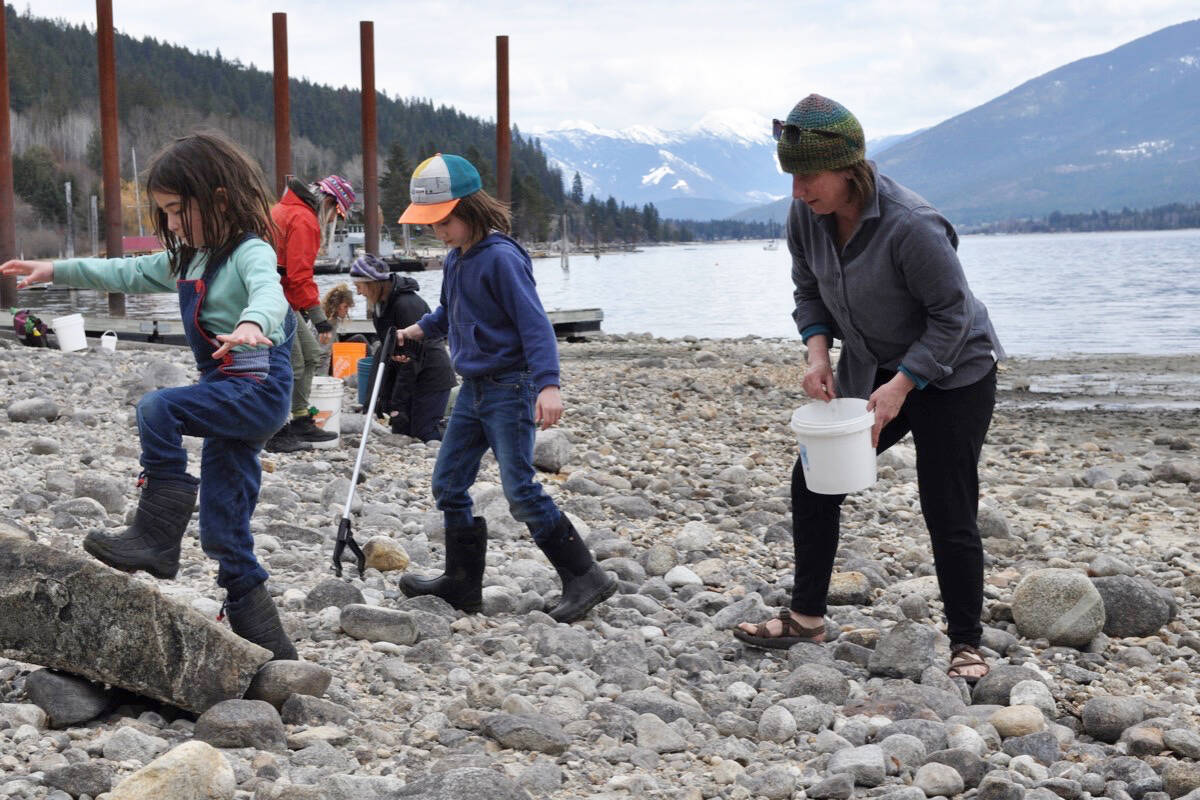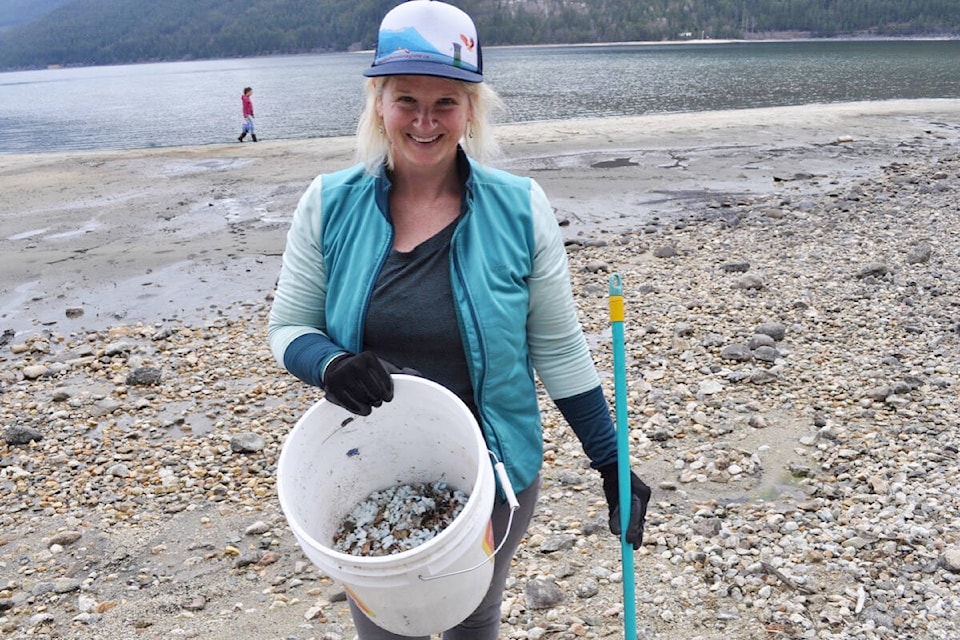Joelle Burnie holds up a pockmarked piece of polystyrene. The block is dirty and partially disintegrated, but no longer in Kootenay Lake.
If it were up to Burnie, there would be no Styrofoam in the lake at all.
On Saturday to mark Earth Day, a group of about 80 people spent two hours on their hands and knees picking shards of foam out of the sand on a slice of beach at Kokanee Creek Provincial Park.
Burnie, the Friends of Kootenay Lake Stewardship Society’s environmental outreach co-ordinator, says the foam litter comes from being used to float docks on the lake.
Polystyrene makes sense for docks — it’s lightweight, cheap and water resistant. But it’s also toxic, and will litter the lake and beaches if it’s not encapsulated.
“It’s a big issue on Kootenay Lake,” says Burnie. “There’s so much polystyrene on so many beaches. We really need to first get polystyrene docks off of Kootenay Lake and stop making our docks out of that material, and then also clean up the beaches that are already contaminated.”
That’s easier said than done.
Ursula Lowry was among the volunteers cleaning up the beach on Saturday. Lowry lives near the park and has her own beach, where she began noticing polystyrene pieces appear in 2014.
She said she’s tried petitioning the federal government to ban polystyrene from freshwater bodies, to no avail.
“Local is one thing, but unless it is done federally it’s not going to happen.”
There’s reason to believe that may change.
In 2022, polystyrene products were included in the federal ban on the manufacture, import and sale of single-use plastics.
A further ban on its use in water will eventually be heard in the House of Commons. On March 24, North Island-Powell River NDP MP Rachel Blaney introduced a private member’s motion calling for a ban on polystyrene from floating structures.

Polystyrene has also been shown to be a health risk to wildlife and humans. In 2018, the World Health Organization determined styrene is “probably carcinogenic for humans.”
Burnie said the foam poisons wildlife and can block their intestinal tracts. If a fish that has previously consumed polystyrene is caught and eaten by a human, Burnie said it’s possible for the toxins to be ingested as well.
But until there’s a federal ban, cleaning up Kootenay Lake and its beaches will continue to be an annual chore that’s done mostly by hand, piece by piece.
Burnie said the cleanup at the Kokanee Creek has been going on for three-to-five years with no end in sight. In only two hours, volunteers removed 183 pounds of polystyrene from the dog beach on Saturday.
“It definitely needs to be taken care of, and we need to do something about it.”

READ MORE:
• Oil and gas ‘sleeper permits’ surrendered for sensitive B.C. coastal areas
• Call for regulations after numerous cats, dogs caught in wildlife traps in B.C.
• RDCK director pushes back against petition opposed to Climate Action Plan
@tyler_harper | tyler.harper@nelsonstar.com
Like us on Facebook and follow us on Twitter.
